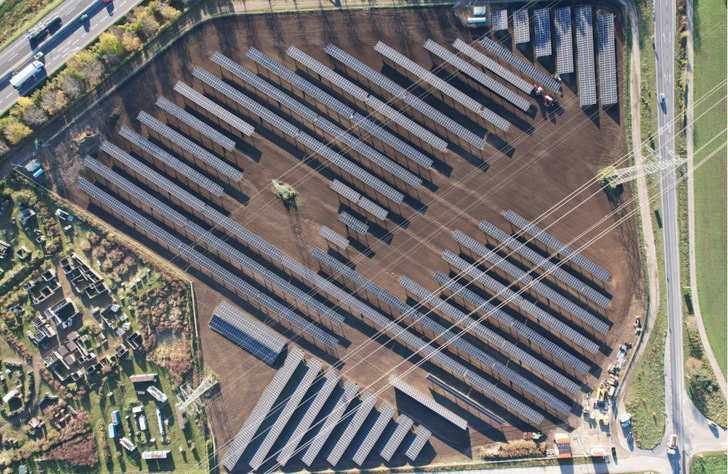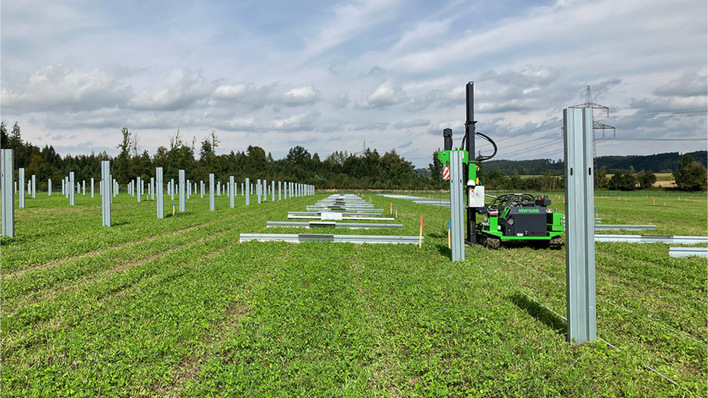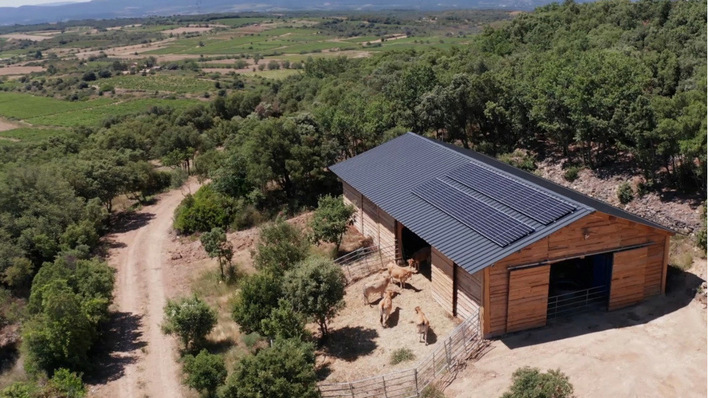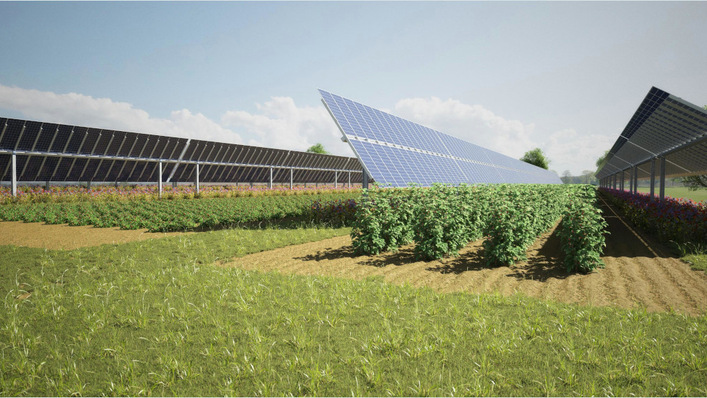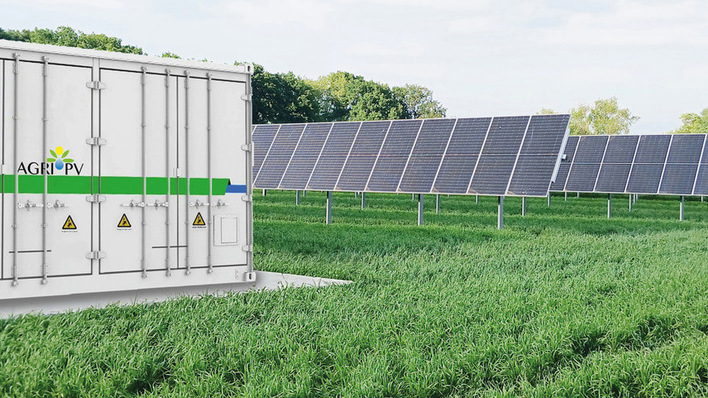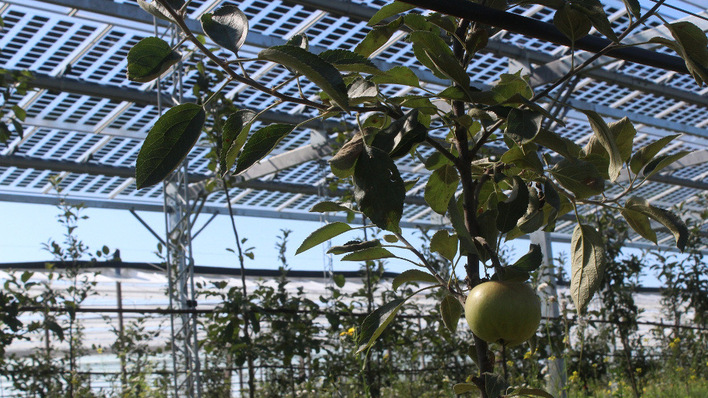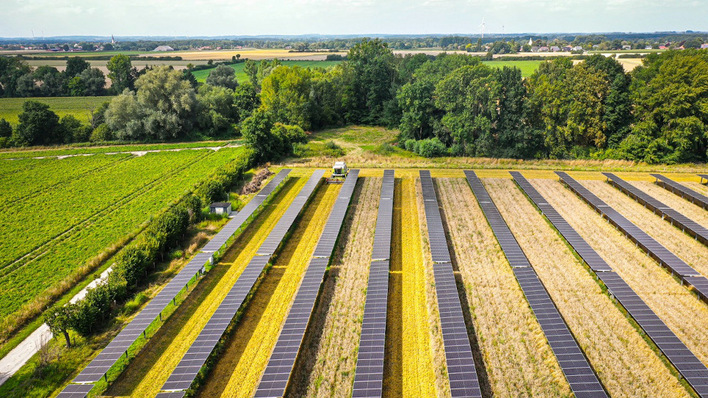With the EWS Sonnenfeld in Bruck/Leitha, an agriphotovoltaic plant with a capacity of three megawatts went into operation in Lower Austria. In order to continue agricultural use, the technicians from Energiepark Bruck/Leitha mounted the modules on trackers that track the panels to the sun. This has the advantage that the modules can also be rotated manually into a position that still allows unhindered agricultural cultivation of the area. This is also ensured by the fact that the modules are mounted very high on the trackers anyway, so that the individual rows do not shade each other.
Land use of photovoltaics is minimal
In order to keep the use of space by the solar system as low as possible, the tracker rows were each built on a row of mounting posts. As a result, the solar system takes up only two per cent of the total area that cannot be farmed. Of the remaining 98 per cent of the area, 80 per cent is used for food. Another 18 per cent is used to increase biodiversity in the form of flowering strips and bee pastures.
Scientific project support
In addition, researchers from the University of Natural Resources and Applied Life Sciences in Vienna will scientifically accompany the project. Over the next three years, applied research will provide answers on how to optimise the simultaneous generation of solar power and food production on arable land and grassland.
The scientists are investigating the mutual interactions of parallel electricity production and agricultural production under different conditions. "We expect to obtain information on how mechanised agricultural management works best in practice, which plant cultures are optimally suited and what effects the agriphotovoltaic system has on biodiversity. The movable sun catchers in combination with smart control software enable us to react to certain aspects such as type of crop, drought, precipitation and partial shading and to get the most out of the combination of solar power generation and plant growth," explains Joachim Payr of EWS Consulting as product developer of the solar field.
Developing a concept for further projects
These research results can then be used to develop concepts for the sustainable use of agricultural land, is how Alexander Bauer describes the actual research goal. He is responsible for the scientific management of the project for the Institute of Agricultural Engineering at the University of Natural Resources and Applied Life Sciences Vienna in cooperation with the Institute of Crop Production. This is because the research results will show which crops are best suited for use on the Bruck/Leitha sun field and thus also in other regions of Austria. (su/mfo)
Have you seen our special issue on agri-PV? Here you can download it for free


